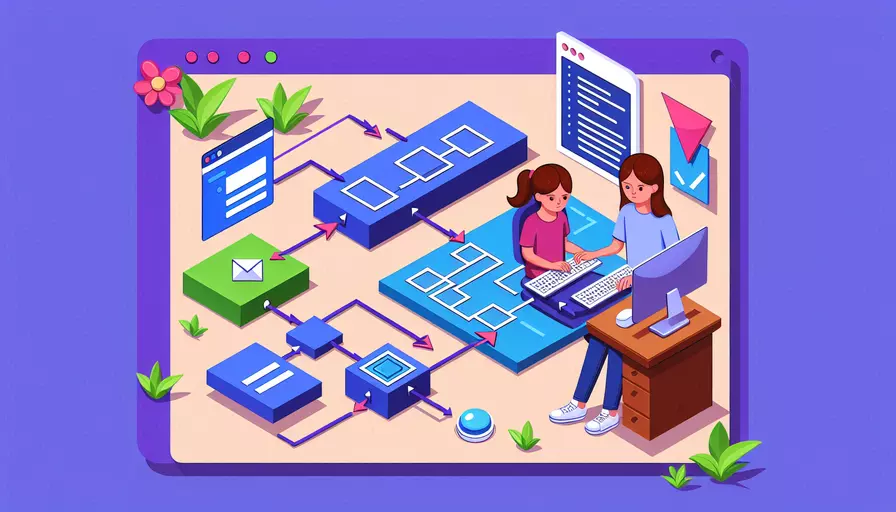
在Vue.js中,获得组件对象有以下几种方法:1、通过ref引用、2、通过$children、3、通过$parent、4、通过$root。这些方法可以帮助开发者在不同的场景下获取组件实例,从而调用其方法或访问其数据属性。
一、通过`ref`引用
使用ref属性是Vue.js中最常见和推荐的方式来获得组件对象。通过在模板中给组件添加ref属性,然后在父组件的实例中使用this.$refs访问该组件实例。
<template>
<ChildComponent ref="child"></ChildComponent>
</template>
<script>
export default {
mounted() {
const childComponent = this.$refs.child;
console.log(childComponent);
}
};
</script>
这种方法的优点是明确且容易理解,但仅适用于父子组件之间的通信。
二、通过`$children`
$children属性是Vue.js提供的一个属性,包含当前组件的直接子组件实例列表。可以通过遍历$children数组来找到特定的子组件。
<template>
<ChildComponent></ChildComponent>
</template>
<script>
export default {
mounted() {
const childComponent = this.$children[0];
console.log(childComponent);
}
};
</script>
这种方法适用于多子组件的场景,但需要注意的是,$children数组并不保证顺序,因此在某些情况下可能会出现问题。
三、通过`$parent`
$parent属性可以用于子组件中获取父组件的实例。这对需要从子组件访问父组件中的方法或数据非常有用。
<template>
<div>
<button @click="callParentMethod">Call Parent Method</button>
</div>
</template>
<script>
export default {
methods: {
callParentMethod() {
this.$parent.parentMethod();
}
}
};
</script>
这种方法的优点是直接且简单,但同样仅适用于父子组件之间的通信。
四、通过`$root`
$root属性可以用于任何组件中访问根组件实例。这在需要跨组件通信或访问全局状态时非常有用。
<template>
<div>
<button @click="callRootMethod">Call Root Method</button>
</div>
</template>
<script>
export default {
methods: {
callRootMethod() {
this.$root.rootMethod();
}
}
};
</script>
这种方法的优点是灵活且强大,但需要注意的是,过度使用$root可能会导致代码耦合度过高,维护困难。
总结
获得Vue组件对象的方法主要有四种:1、通过ref引用,2、通过$children,3、通过$parent,4、通过$root。每种方法都有其优缺点,适用的场景也各不相同。开发者可以根据具体需求选择最合适的方法来获取组件实例,从而实现更灵活和高效的组件通信。
为了更好地应用这些方法,建议开发者在实际项目中多加练习,熟悉每种方法的使用场景和注意事项。这样,不仅可以提高开发效率,还能写出更清晰和可维护的代码。
相关问答FAQs:
1. 什么是组件对象?
组件对象是指在Vue中通过组件定义创建的实例,它具有组件的属性和方法,可以在应用程序中进行操作和交互。每个组件都有自己独立的组件对象。
2. 如何获得组件对象?
在Vue中,可以通过以下几种方式获得组件对象:
方法一:通过ref属性获取组件对象
在Vue的模板中,可以通过在组件上添加ref属性来获取组件对象。例如:
<template>
<div>
<my-component ref="myComponentRef"></my-component>
</div>
</template>
然后,在Vue实例中可以通过this.$refs来访问这个组件对象:
export default {
mounted() {
const componentObj = this.$refs.myComponentRef;
// 对组件对象进行操作
}
}
方法二:通过$children获取组件对象
在Vue实例中,可以通过this.$children来获取所有子组件的对象,然后可以根据需要筛选出具体的组件对象进行操作。例如:
export default {
mounted() {
const componentObj = this.$children.find(child => child.$options.name === 'my-component');
// 对组件对象进行操作
}
}
方法三:通过$parent获取父组件对象
在Vue实例中,可以通过this.$parent来获取父组件的对象,然后可以对父组件对象进行操作。例如:
export default {
mounted() {
const parentComponentObj = this.$parent;
// 对父组件对象进行操作
}
}
3. 如何在组件之间传递组件对象?
在Vue中,可以通过props属性将组件对象从父组件传递给子组件。首先,在父组件中定义一个变量来存储组件对象,然后通过props属性将这个变量传递给子组件。例如:
<template>
<div>
<my-component :componentObj="myComponentObj"></my-component>
</div>
</template>
然后,在子组件中通过props属性接收并使用这个组件对象:
export default {
props: ['componentObj'],
mounted() {
// 使用传递过来的组件对象进行操作
}
}
通过这种方式,可以在父组件中获取到子组件的组件对象,并进行相应的操作。
文章标题:vue如何获得组件对象,发布者:worktile,转载请注明出处:https://worktile.com/kb/p/3617642

 微信扫一扫
微信扫一扫  支付宝扫一扫
支付宝扫一扫 